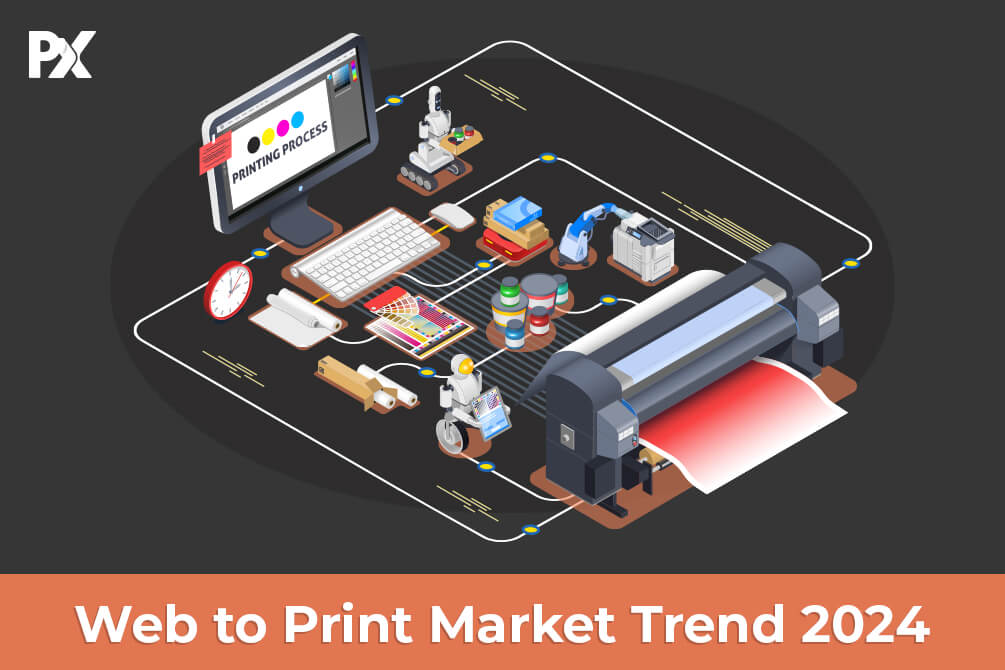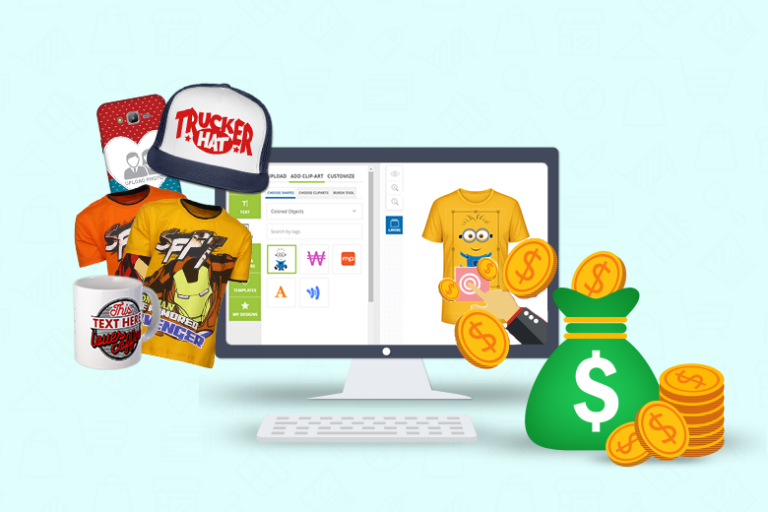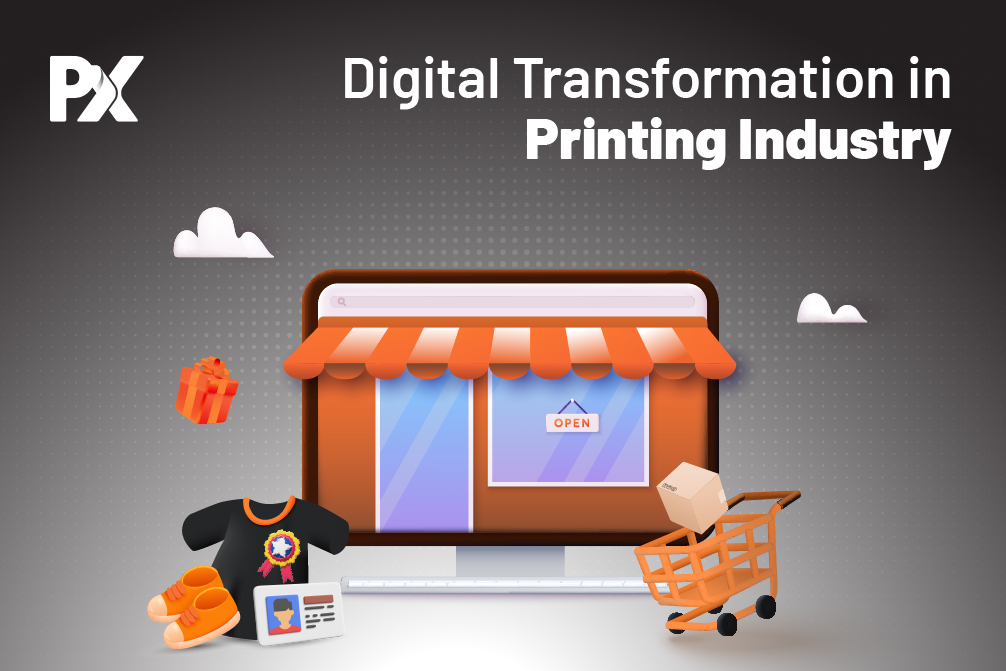Summary
You are sitting at home, sipping your coffee, browsing through your favorite online store, and suddenly, you stumble upon a design that makes you feel it was made just for you
With a few clicks and taps, you choose your size, color, and design options. It’s like online shopping but with a twist!
Customers have been enjoying this vibe and feel customized products give. This industry is continuously growing and will continue to grow in the upcoming years. Web-to-print solutions dominate the print industry because of their endless benefits due to automation and advanced features.
However, today, commercial printing businesses are facing challenges like increased orders, shorter run lengths, faster turnaround times, keeping print prices stable, and offering options to customize. The easiest way to tackle them all is with W2P solutions.
Because w2p solutions not only make it easier for print businesses to handle high-volume tasks, but they also help them deliver exactly what customers want. Due to this, there has been a sudden surge in the usage of web-to-print solutions, with the global web-to-print market size projected to grow at a CAGR of 5.2% between 2023 and 2028.
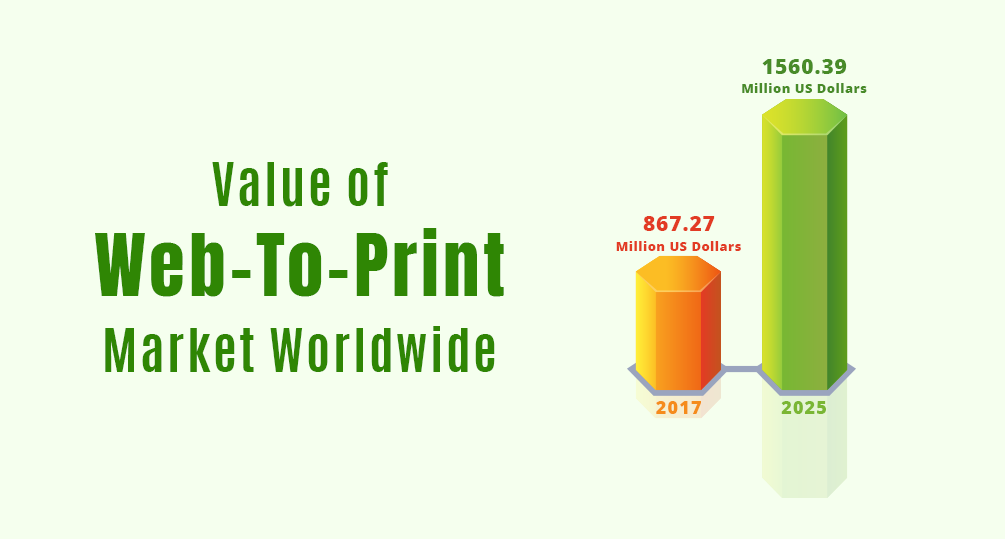
This clearly indicates how crucial W2P has become for any existing or new print venture.
Looking for a W2P solution with extensive features to effortlessly tackle the growing print orders in your business? Look no further, as we have the perfect resolution to your problem.
If you are running a print business, you must keep up with the latest trends and challenges in the web-to-print industry, as it has now become more important than ever.
And to provide you with the same, I have gathered information about everything that is taking place in the web-to-print industry. Also, how your print business can capitalize on these trends and expand more efficiently in the future.
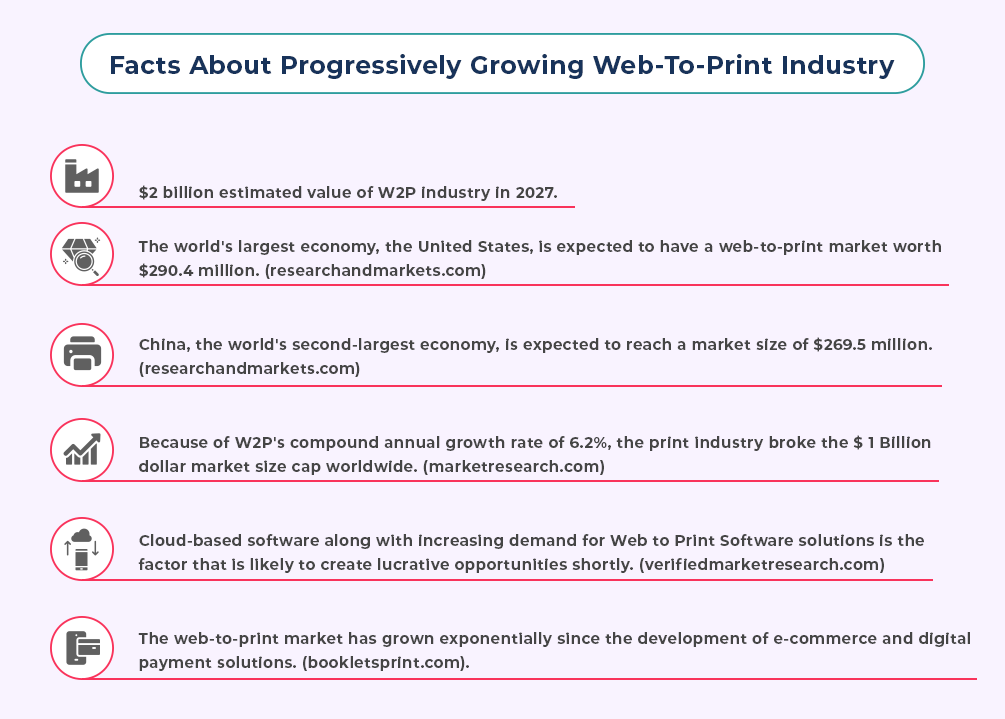
Challenges Faced by Print Industry in 2023
Cost Inflation
The cost of inks, other raw materials, transportation, and energy continuously increases. This makes a big hole in print businesses’ pockets. Also, the labor costs have spiked up, adding more challenges for the print owners.
Labor Shortage
Despite paying huge salaries, labor is hard to find. Companies are complaining about finding laborers who will stick around for a long time and are efficient in doing complicated tasks. The labor shortage is disrupting production. Most companies’ productivity has dropped due to this.
Thinning Margin
With rising costs, companies find it difficult to keep a safe margin. Companies are worried about decreasing margins as they find it challenging to maintain profitability.
Possible Actions to Overcome the Challenges
Increase Prices
To maintain profitability, it is inevitable to increase the prices. Some companies have lost accounts after the price hike, but there is no other choice if you want to keep your business profitable.
Cost Control
Controlling the cost can play a huge role in managing price hikes and increasing profitability. Reducing labor work with automation can help you make things faster and with less human involvement. So, you will also be saving on labor costs. You can also optimize operations with ERP solutions.
Develop New Market
It is always a good idea to expand your verticals and develop new products, services, etc. This will open doors for you to attract more customers.
Let us begin with the Major Factors Contributing to the Growth of W2P Solutions.
1. E-commerce and Digital Trade
The preference of consumers has changed post-covid. They now search for everything they want on their mobile phones or laptops. The printing industry has also fallen prey to such expectations. All thanks to web-to-print technology, printing firms are now able to provide efficient services at the convenience of their clients. Many printing companies have shifted their business online with the help of W2P solutions.
Planning to take your print business online?
At PrintXpand, our team of experts can assist you with the same. They can design a storefront personalized to your industry and business needs.
2. Personalized Products
The designer designs, the company manufactures and the customer buys the product..! Nah
Gone are the days when the brand-consumer relationship was one-sided. Today the demand for personalized products has made this relationship a two-way street. Customers now demand something unique that is specially catered to their needs.
This is one of the prominent reasons, most print businesses are integrating a Web-to-print design tool into their web storefront. This customer-centric approach is leading to an increase in demand for printing services.
With the resources like web-to-print designer tools, print business owners can allow their customers to customize the product as they like. They can even get their bulk orders customized with the help of the variable data printing feature available in the tool.
The features like pre-designed templates, multiple font options, liberty to upload any images, background manager, and more help even a non-technical customer to easily customize products as they want.
Irrespective of any e-commerce platform, this tool integrates with them seamlessly and helps businesses to target their customers individually. They can cater to each need of their customers with the help of this intuitive tool.
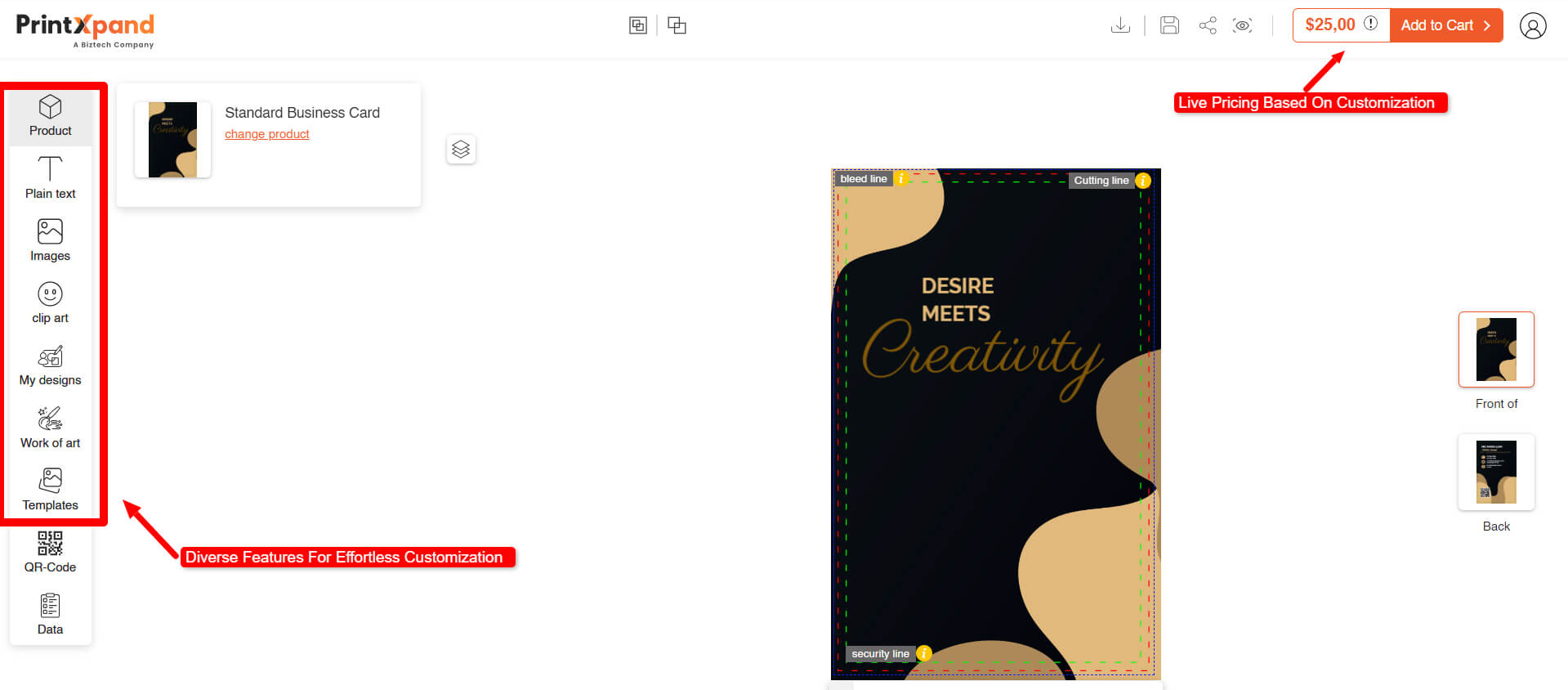
Click on the link below to explore all the components of a designer tool and how it can help your business in delivering all the trending customized products.
4. UV Printing
UV-cured ink technology is used to cure digital inks, primarily for W2P technology. This ink offers reduced consumption during the printing process. In addition, UV printers also reduce turnaround times for printing and use around 20% less ink than conventional printers.
These advantages will result in higher usage of digital inks, which in turn can boost the demand for W2P technology.
The intersection of these reasons with the wide array of benefits of web-to-print technology has resulted in the huge adaptation of this technology all around the printing industry.
After all, who doesn’t want to achieve great efficiency with minimum effort?
The web-to-print technology is expected to grow even more because of the upcoming changes and trends that are going to take place in the industry. Let’s take a look at the web-to-print trends 2024.
A Look at Web-To-Print Trends 2024
Print Automation
Print businesses have to face many challenges today. From rising labor costs to increased prices of raw materials. Passing this cost directly to their customers can have an adverse effect on sales. Hence, to cope with such challenges, automation comes into action.
Automating workflows will provide printers with an opportunity to offer more complex services and receive and manage orders 24/7. Aside from that, they can streamline everything from taking orders to delivering them. They can manage inventory, finances, printing processes, etc. from one place.
This is one of the reasons why more automation leads to higher profitability.
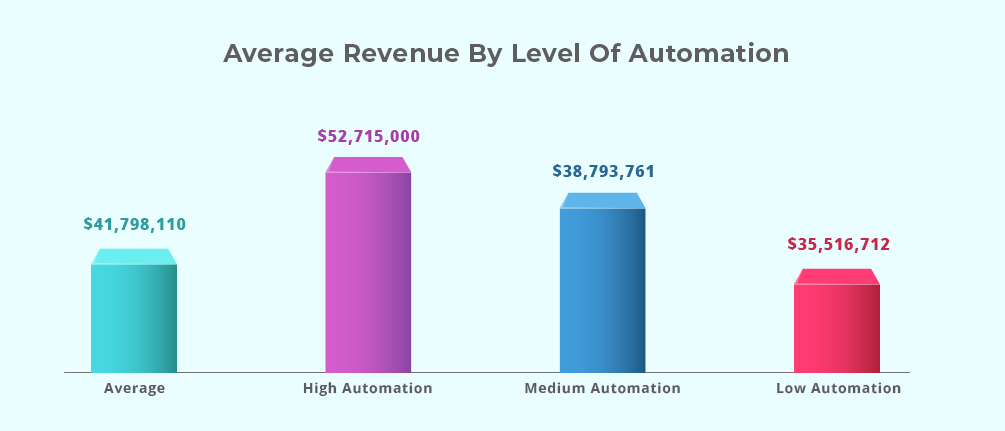
(Source)
The efficient management of each operation leads to less wastage, which results in the completion of the print job at a comparatively lower cost. Due to this, print businesses can achieve cost leadership and stand strong against the competition.

Print ERP software is one of the ways to automate your print workflow. This solution offers a range of functionalities specifically designed for the print industry’s needs to eliminate all the repetitive tasks in the printing process.
The features of this comprehensive solution include:
- Rule-based inventory management for automating stock management.
- Vendor management to save various vendor details and directly raise purchase orders.
- Managing the entire print workflow from a single interface.
- Quote management to easily take care of quote requests.
- Automated artwork approval to eliminate the delayed proofing process.
- Streamlined order management for faster completion of orders.
- Integrated report module for better business analysis.
- Print job manager to automatically assign jobs as per print workflow stages.
Apart from these features, you can also add more functionalities to the software, as it supports seamless integration of any third-party application. You will discover multiple ways in which this solution will transform your printing firm and show it the path to efficiency.
Eco-Friendly Printing

With rising concern over the environment and climate change, it has become necessary to conduct business activities in a way that will have a minimal effect on the surroundings. So, eco-friendly printing uses green innovation in three components: printing technologies, ink, and print materials.
For example, using LED UV printing instead of traditional print-dying technology. LED UV printing uses ultraviolet rays to assure that the finished product has an instant drying process. This type of printing consumes less energy and has a lasting impact.
Similarly, petroleum or plastic-based inks are now replaced with eco-inks. This type of ink uses organic components such as soy or vegetables.
HP, a California-based printer development company, makes sure that 82% of its original ink cartridges contain anywhere between 45% and 70% recycled material instead of plastic.
Thus, going green and adopting sustainable business practices has become more important today than ever. With time, there will be more such innovations, and companies will have no choice but to adopt these changes.
INDUSTRIE 4.0
Industrie 4.0 means revolutionizing the ways companies manufacture and sell their products. It is a transformation that has affected every sector, and the printing industry is no different. In the printing sector, it revolves around automation and connected smart machines that make the printing process easier and more efficient.
In this kind of print manufacturing, the crucial element is data that connects machines to machines, machines to plant environments, plant environments to management systems, and management systems to customers.
Many firms in the printing industry have started to invest a substantial percentage of their total investments in types of software that will help them transform their activities based on full or partial digitalization in the next few years.
Product Packaging
Packaging is quickly becoming the most in-demand product among all print categories. As a result, packaging demand is expected to grow at a 2.9% annual rate, reaching USD 980 billion in 2022.
This hike in demand is because of two reasons:
- Customized Packaging
- Eco-friendly Packaging
As mentioned earlier, customers wish to have a personal touch on the product they are purchasing. And businesses have started working on the same thing. And one way to do it is to provide personalized packaging.
A notable example of the same is Dedicato a Te by Barilla, an Italian e-commerce platform. They offer customers the option of customizing their packaging with photos, pictures, images, names, and messages. Customers can design the packaging for particular celebrations or occasions throughout the year. And to make it even more attractive, they use packaging materials that are completely recyclable.
This turned out to be a successful business idea, with 94% of customers likely to make a repurchase from their website.

Additive manufacturing
The 3D printing market, also called additive manufacturing, is forecasted to almost triple over the next 4 years, reaching a value of $44.5bn in 2026. This stat alone is enough to prove the significance of 3D printing in the upcoming years.
It is emerging as a manufacturing tool, with a wide array of industries utilizing it for creating parts and products. 3D printing allows the printing of three-dimensional solid objects from pre-saved digital files.
It saves lots of time, as everything can be designed digitally on high-end software and then printed on a 3D printer. Thus, you can produce complex shapes using less material than traditional manufacturing methods.
Wrapping Up
There has been a complete transformation in the operations of the print industry post-pandemic. With digital disruption occurring, many businesses may find it difficult to adapt. But as the adage goes, “The courage to change will be rewarded.” Businesses that keep up with the flow will undoubtedly find themselves in a better position in the future.
And one thing that has become clear after this is that digital disruption, such as web-to-print solutions, has created new opportunities for print businesses. When implemented with proper planning, they can increase business efficiency and boost your revenue.
At PrintXpand, we provide a comprehensive guide to help your business integrate web-to-print solutions into your existing print business. Our team of experts will understand the specific requirements of your business and deliver a solution accordingly.
To know more about the web-to-print solutions and how to get started with the same, we provide a personalized demo at your convenience. This demo will help you get a better understanding of how our web-to-print solutions can help your business to grow better.
All product and company names are trademarks™, registered® or copyright© trademarks of their respective holders. Use of them does not imply any affiliation with or endorsement by them.
